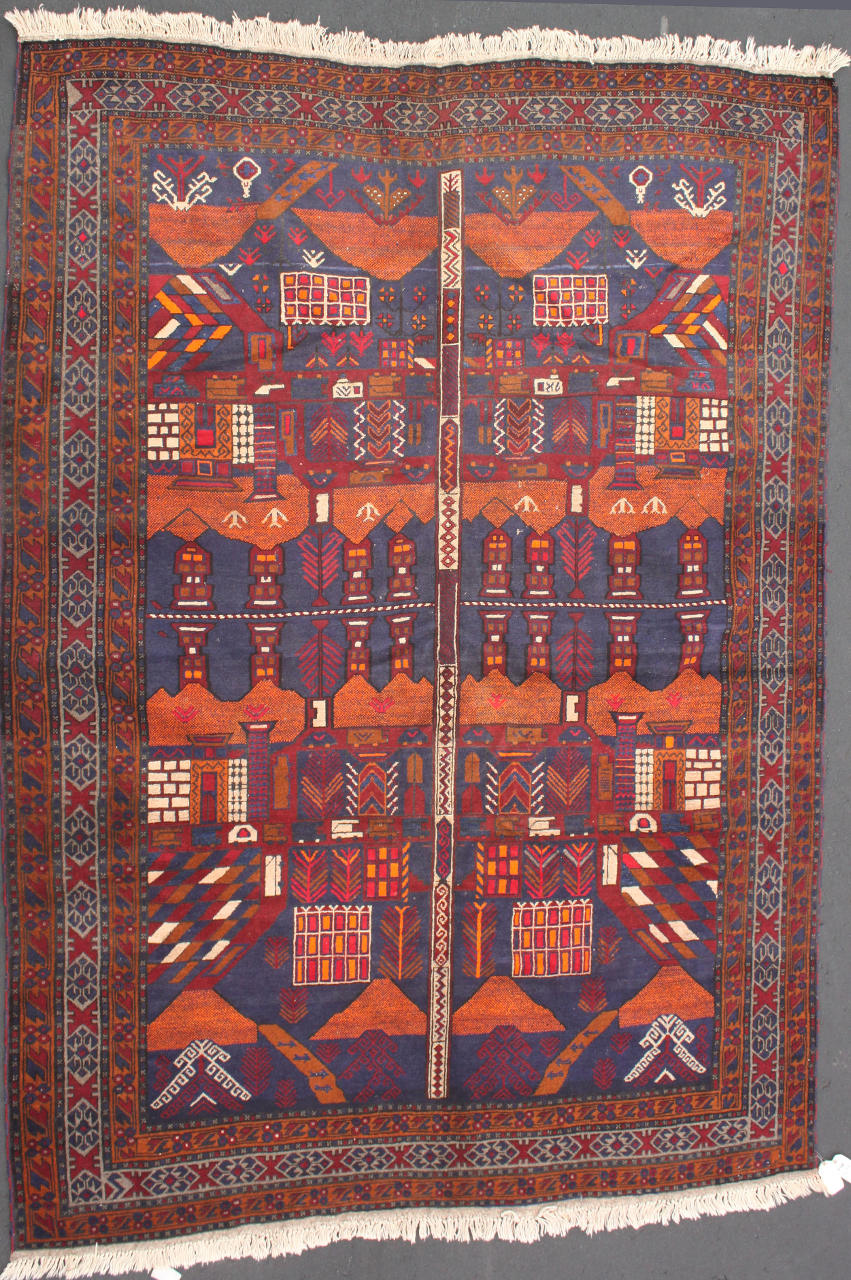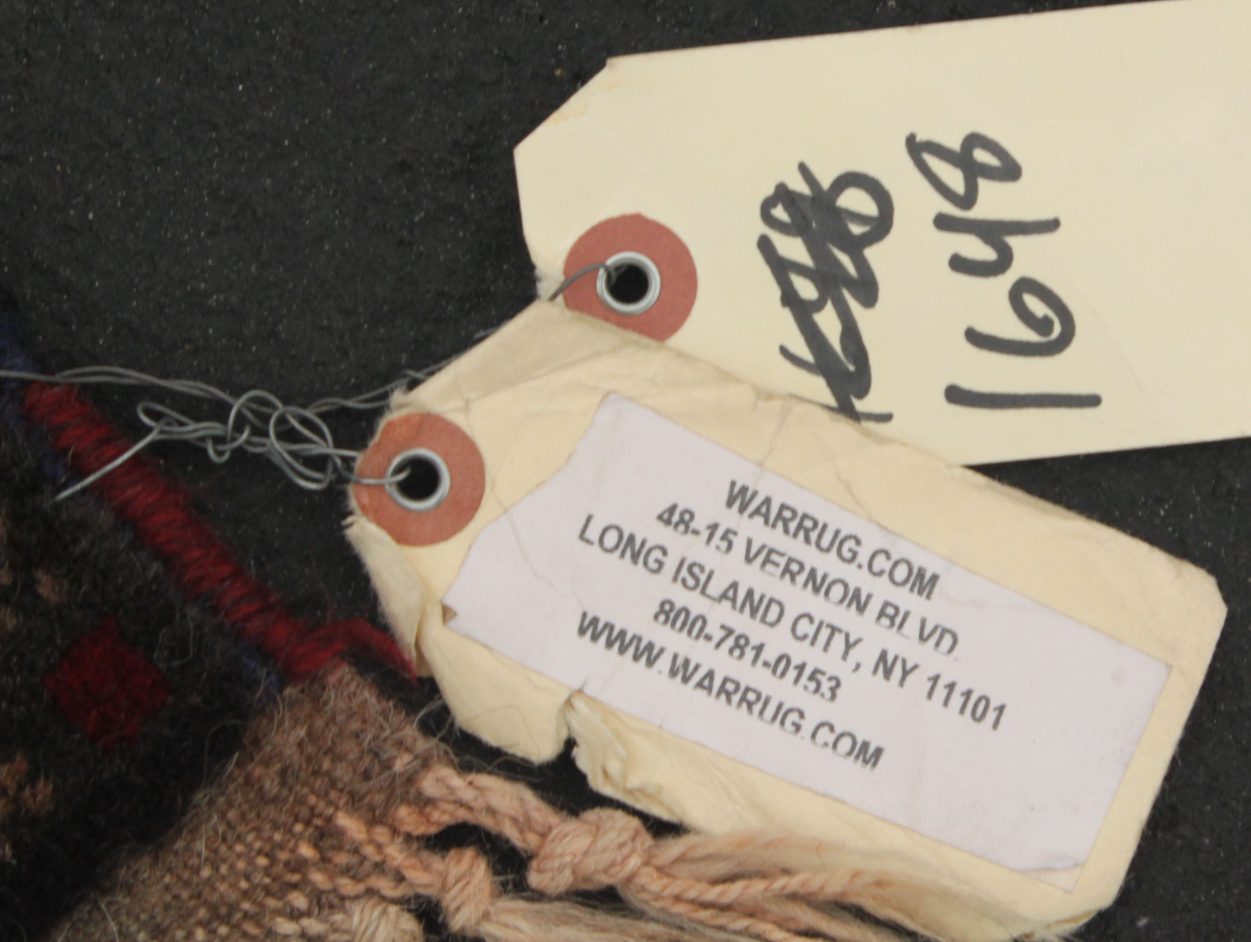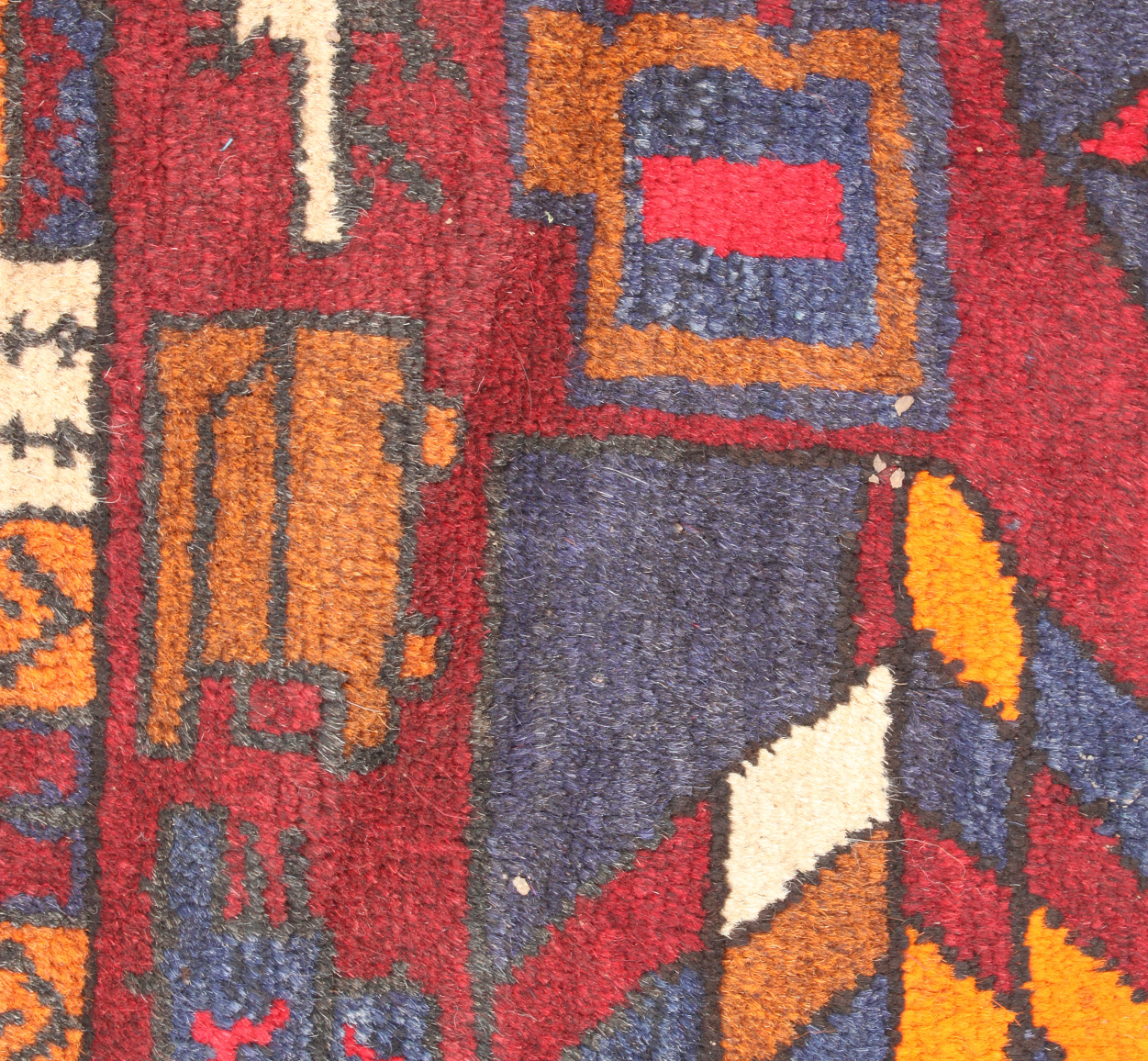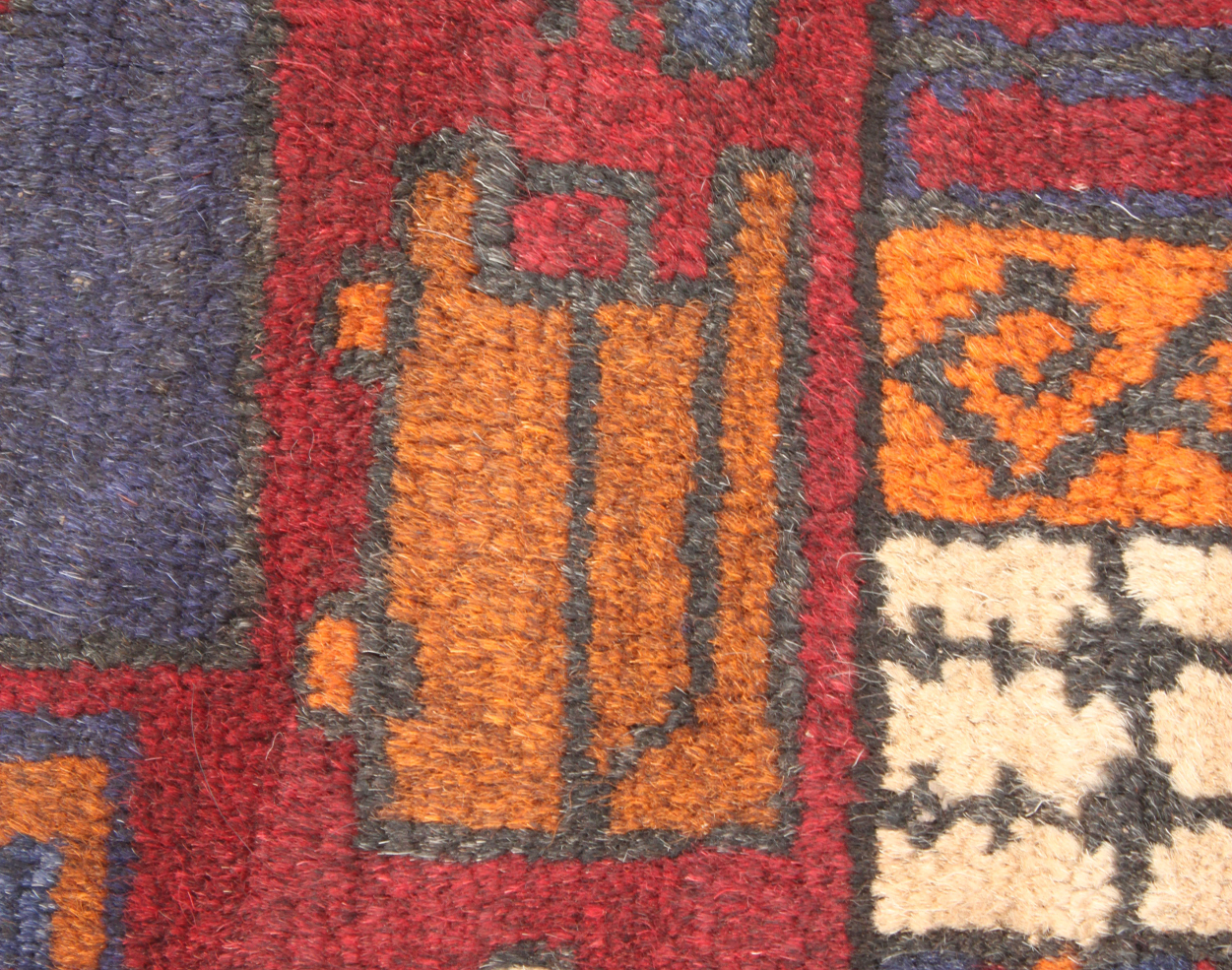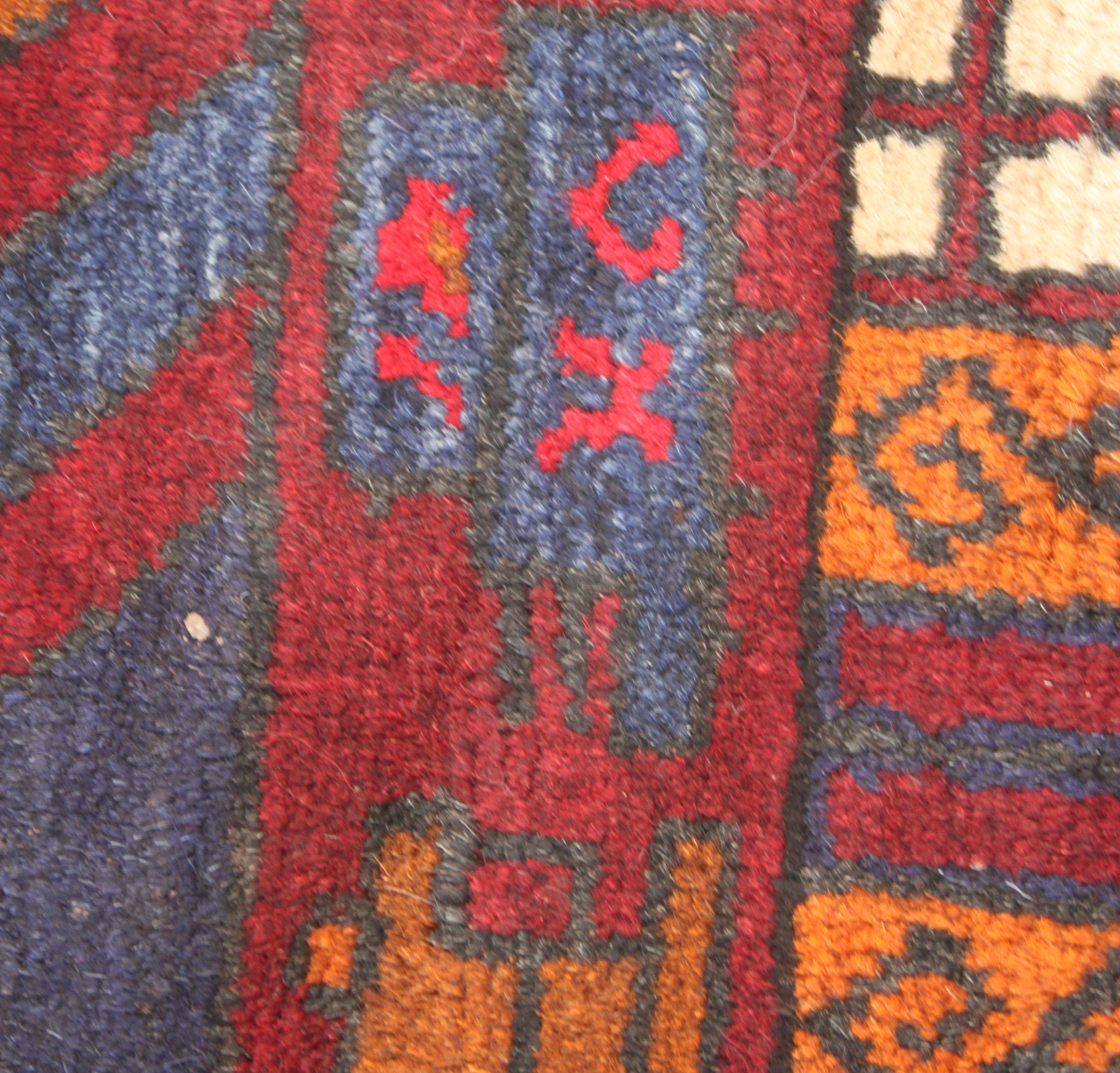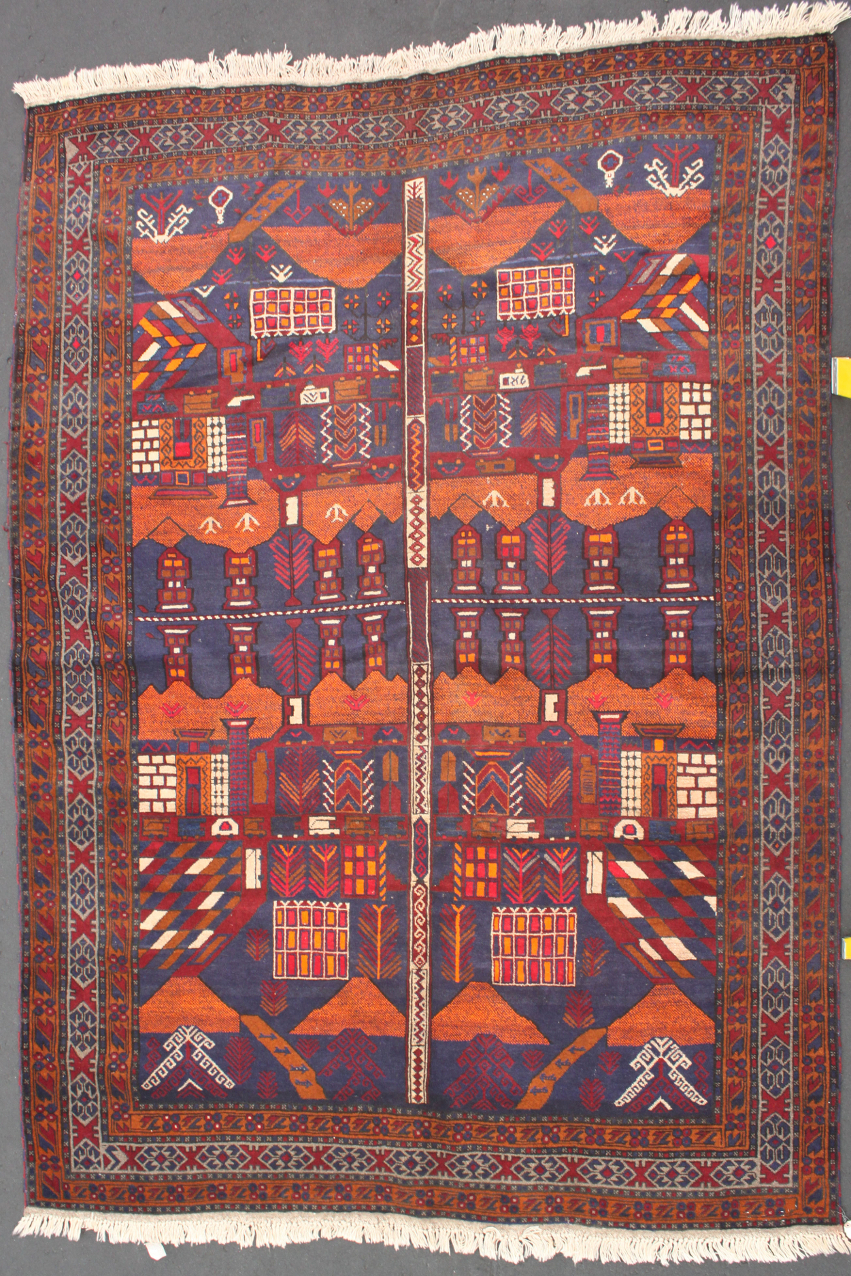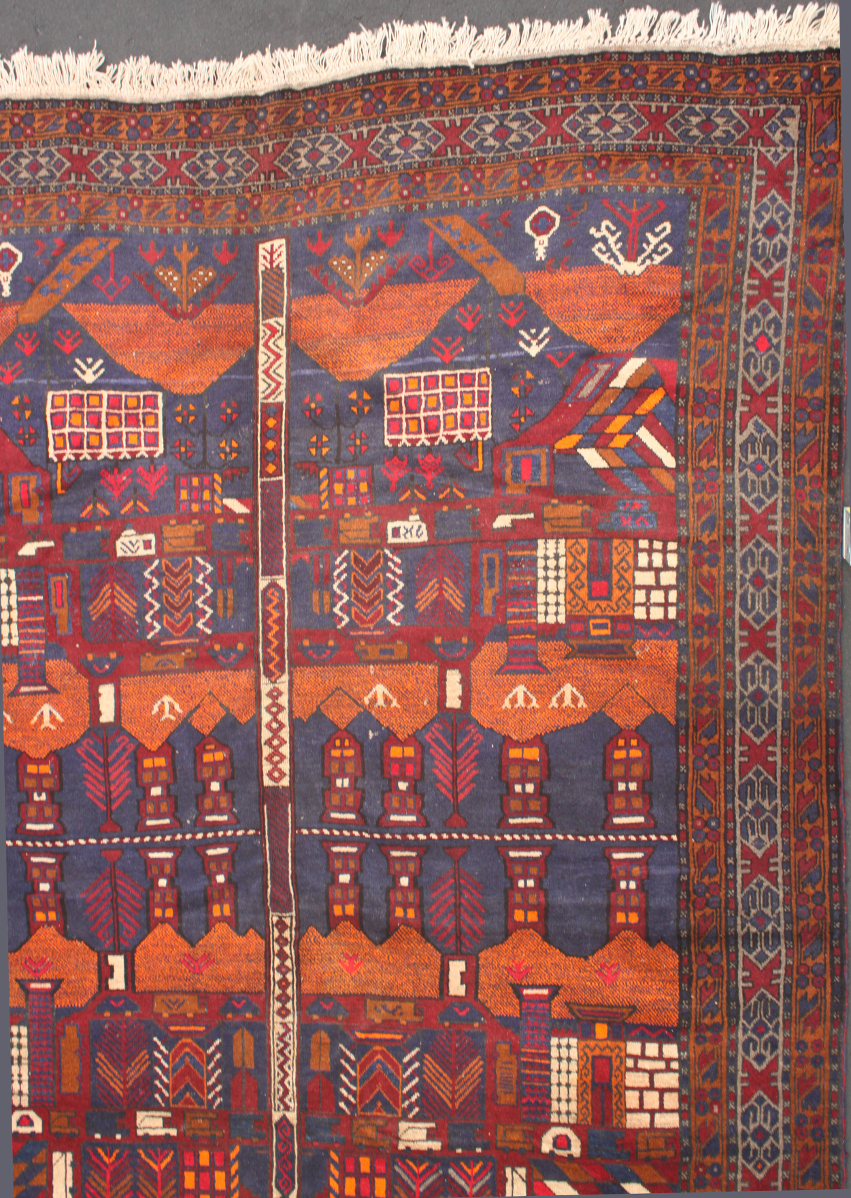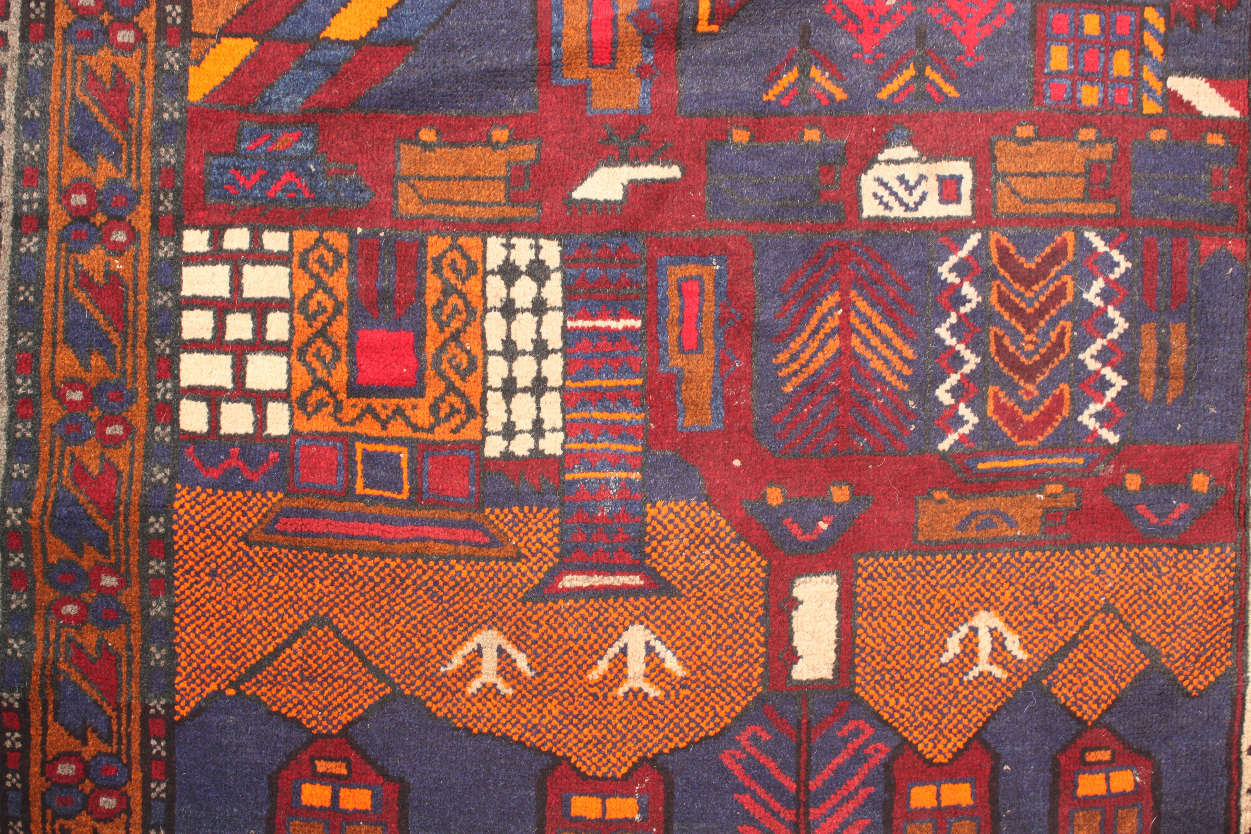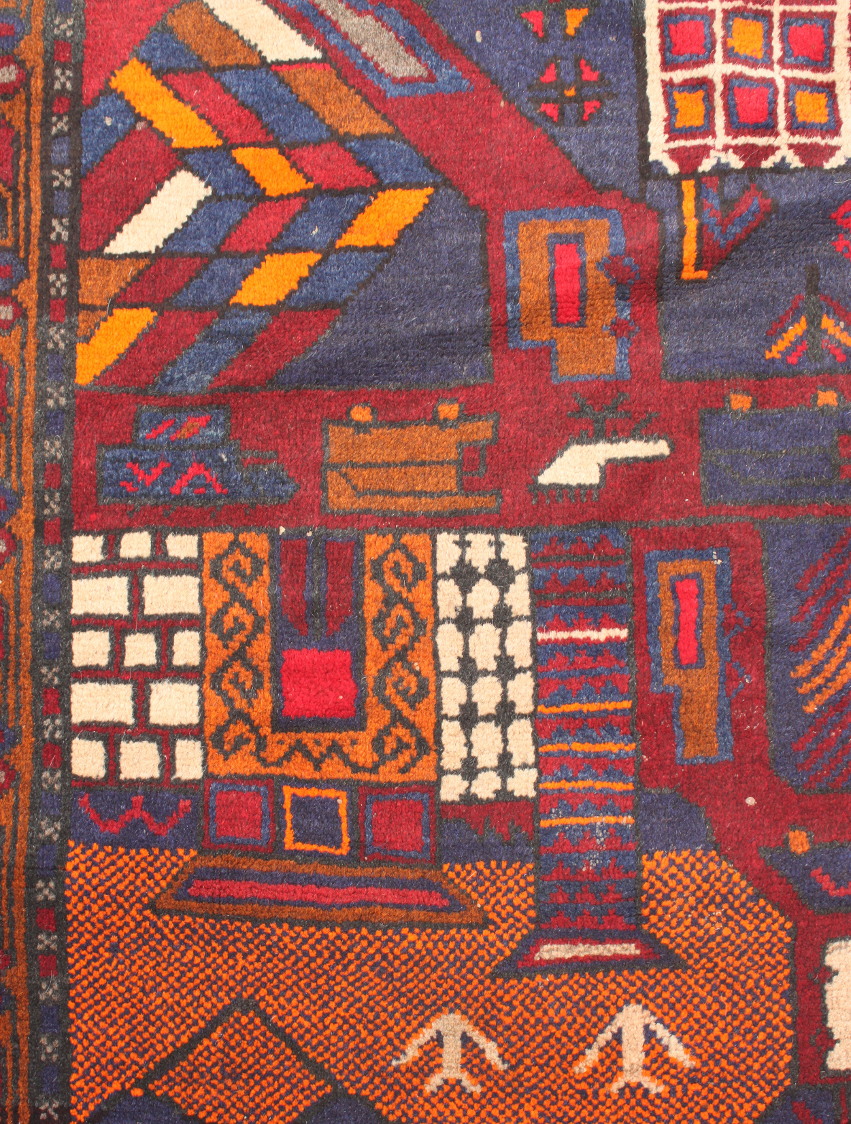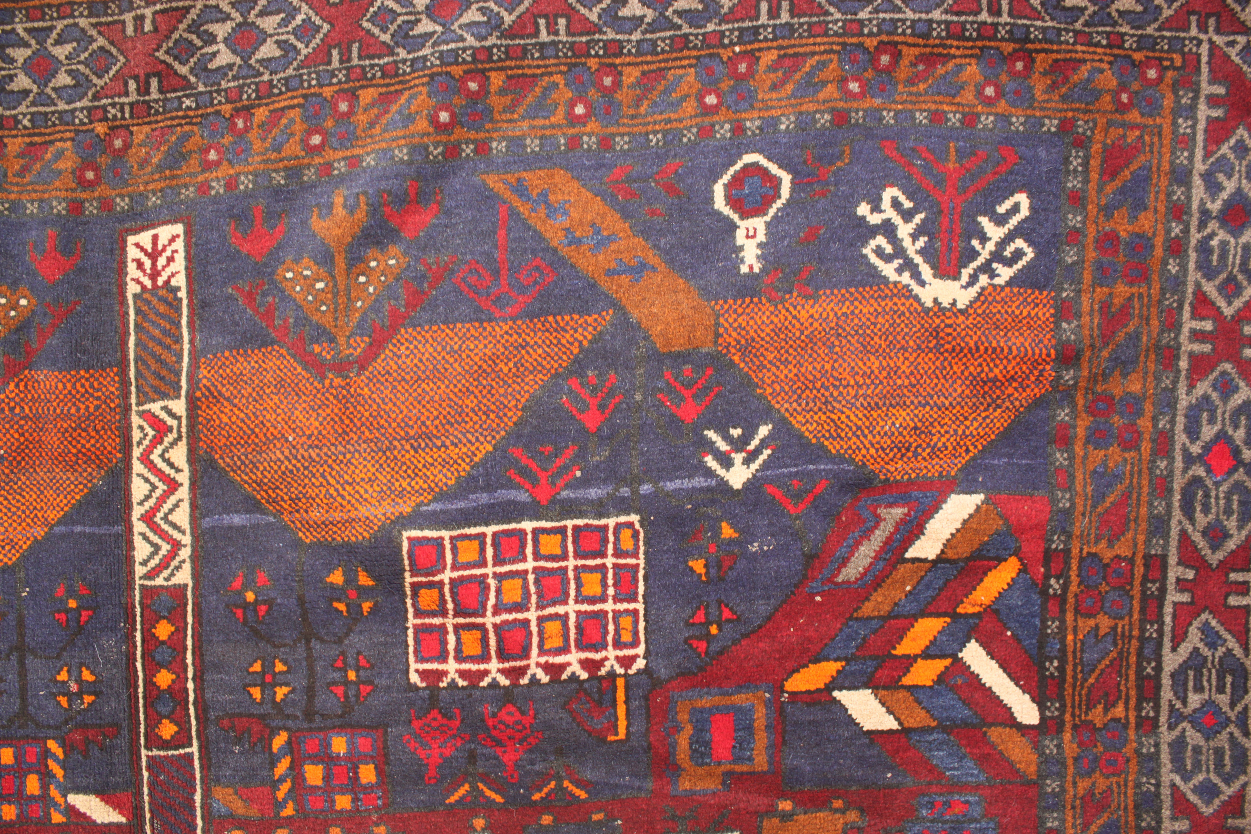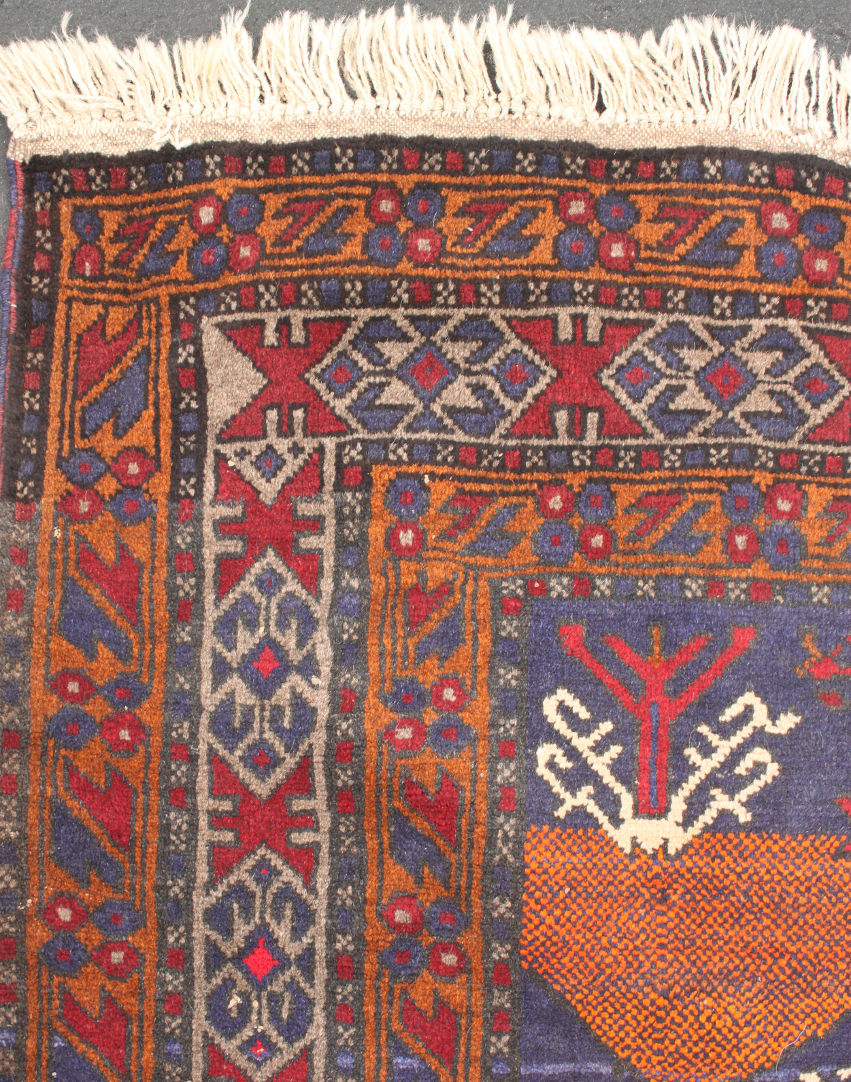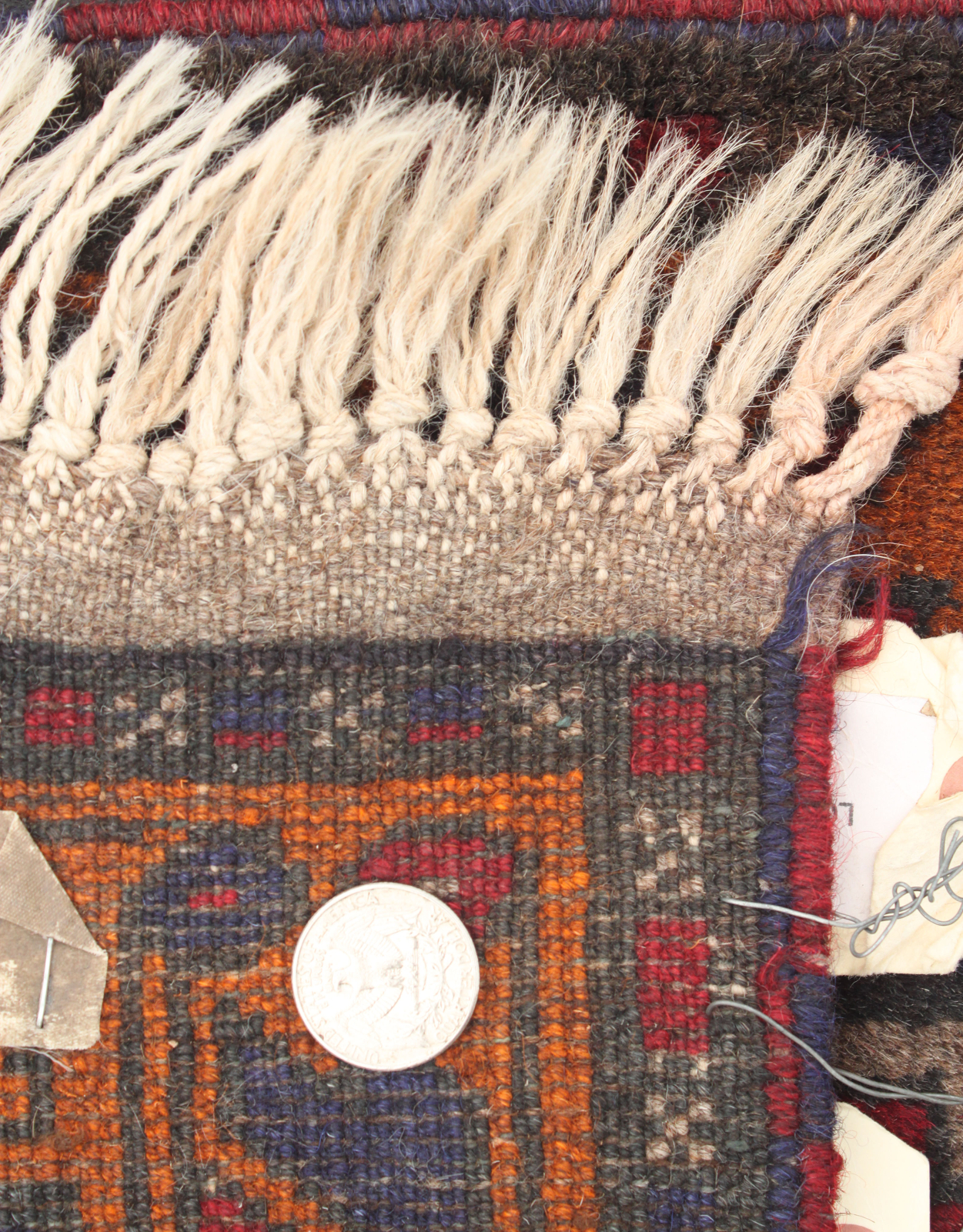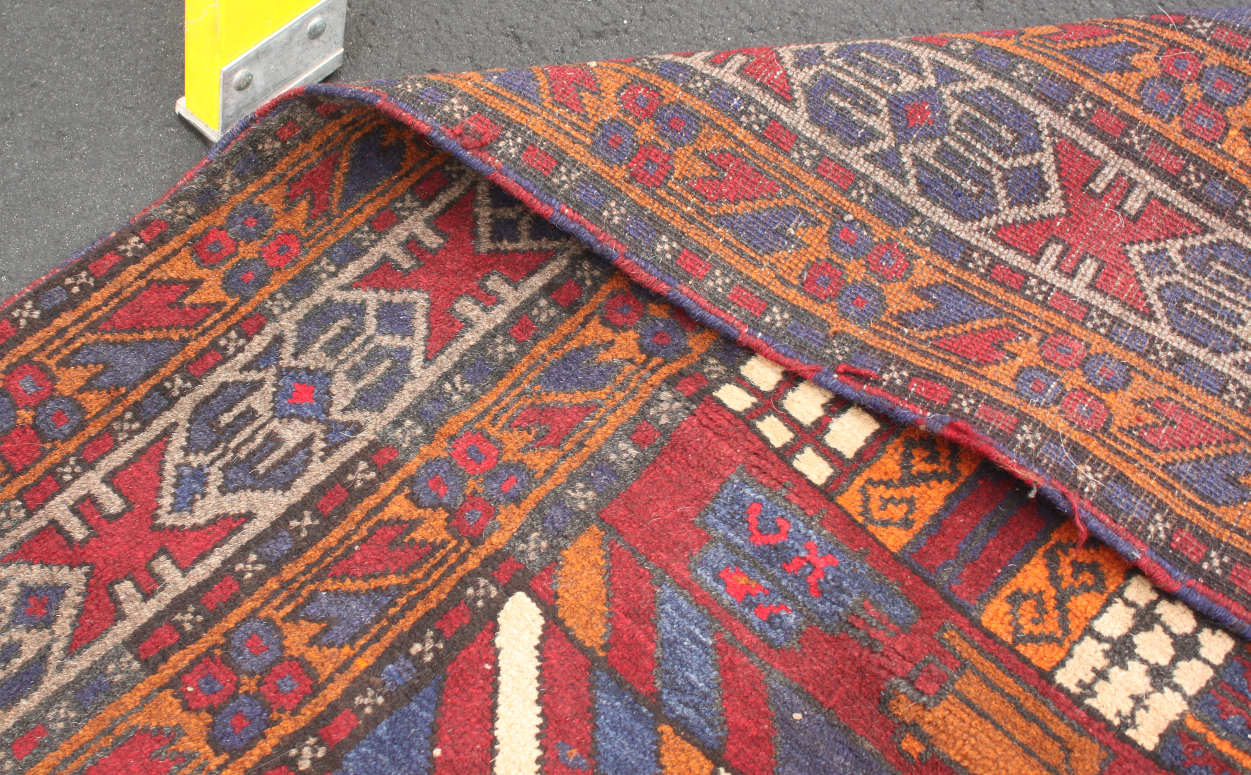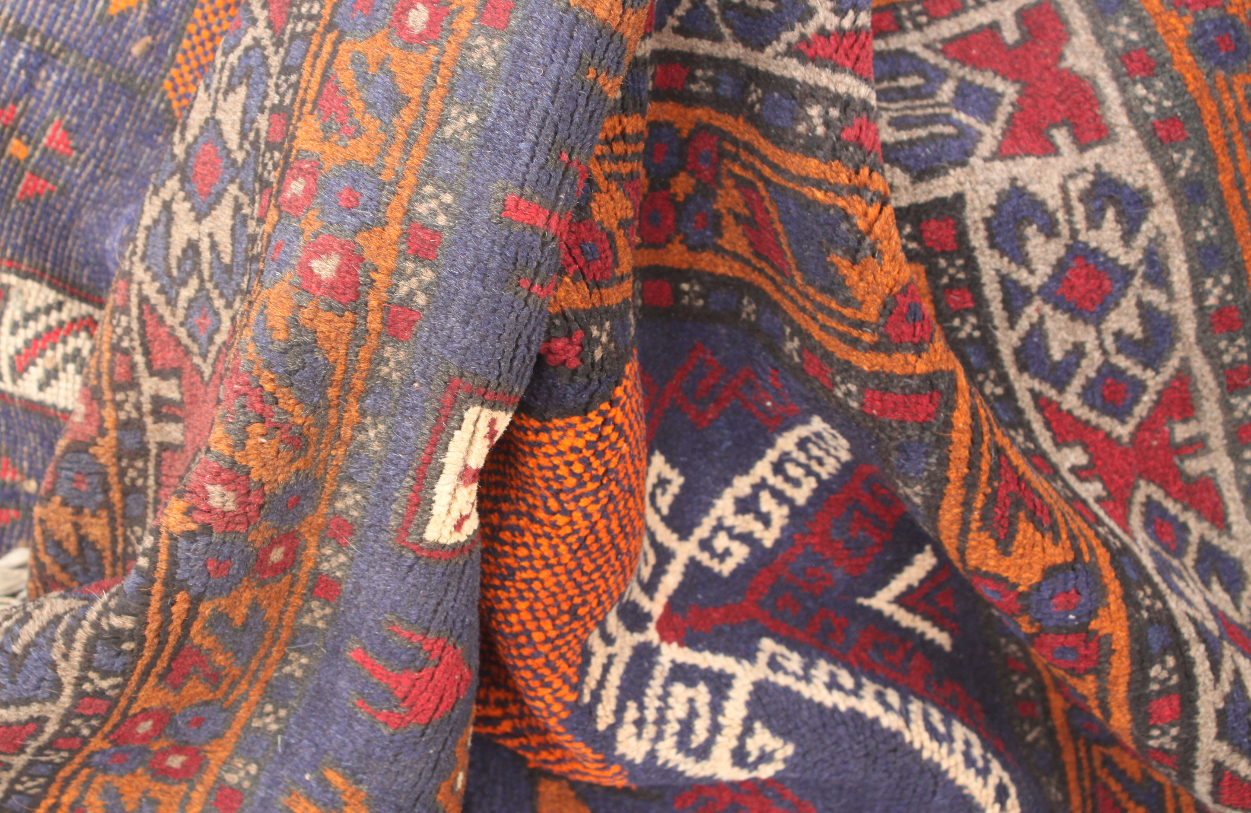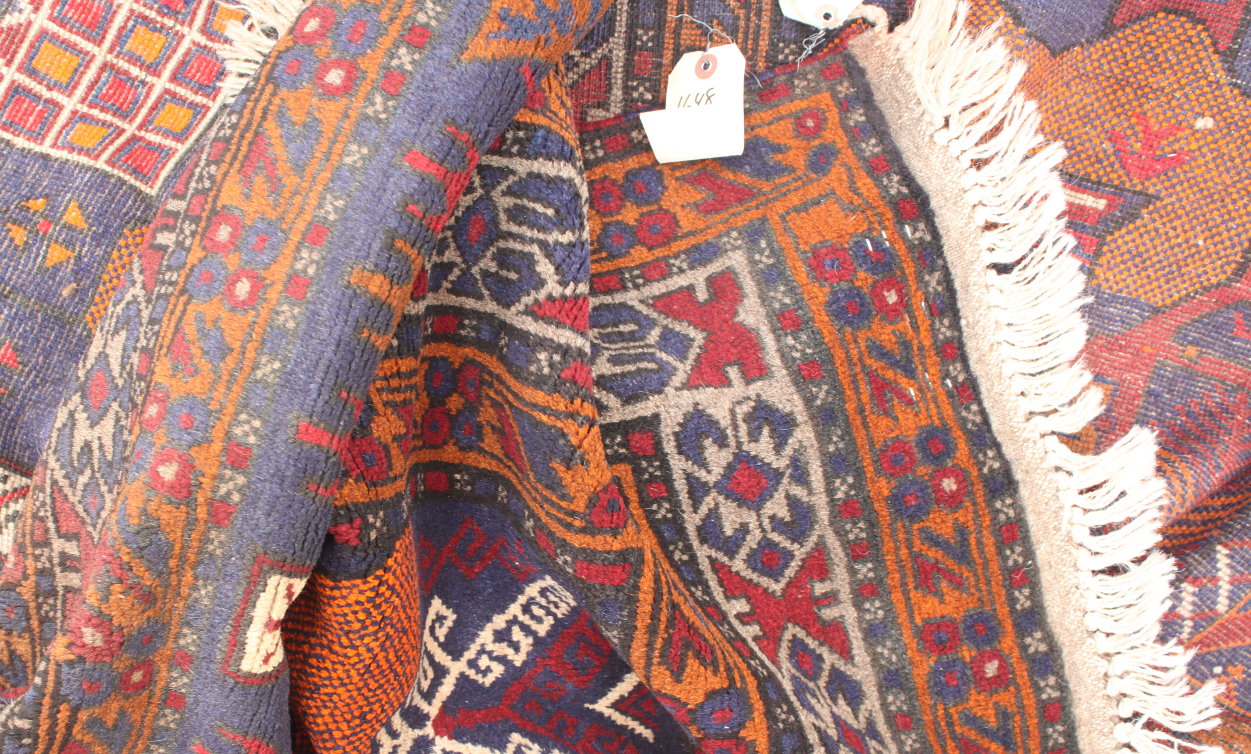
Four Panel Prayer Rug
Price on request
| ID# 1648 | Date: 1980s | -:- | Size 78 x 108 inches
(198 X274 cm) |
| Knots/Inch: 8 h X 8 | Origin: Afghanistan | Style: -Four Panel Landscape (2X2), Other examples of this style | Tribe: Taimani |
The main landscape motif in this rug is repeated four times, once in each quadrant. The rug appears to be a multi-person prayer rug. A strong patterned line separates the two vertical halves, and a red and white barber pole line separates the top and the bottom. One thing that differentiates this rug from other multi-person prayer rugs is that it is symetrical vertically, so all the minarets cannot point to Mecca. The The composition uses strong diagonals to draw in the eye into the rug and move one's attention around the carpet. At the top the brown triangles at top and bottom adn diagonal brown lines combine with the polychrome checkerboards to activate the composition. In the center, sitting atop the diagonals is a rectangle with orange and red buildings in the corners, and whose sides are the leaf forms between the minarets in the dark sky. The mirror images across the vertical mid-line is unusual and turns the two panels into one larger scene. The reflection across the center horizon, appears almost like a reflection in water, similar to this rug and this rug. This rug is symmetrical vertically and horizontally, it is somewhat similar to this war rug, but nonetheless very unusual. The image appears to be a mountain landscape with minarets behind the mountains. In front of the mountains is a Soviet armored column, a wall, and another column in front of the wall. The checkerboard pattern gives dramatic spatial depth to the design. The armored column (like rug #1082) shows Soviet era cab-over Soviet military trucks points reinforcing the 1980's attribution. The wool foundation is a early rugs. |
| Wool: Most rugs are "finished" after being woven. Their pile is clipped and the carpet is washed, sometimes "conditioned", and then blocked while it dries. This rug appears to be 'unwashed', which is very unusual. | Sheen: Matte, dry, dusty. | Handle: Slightly floppy | Selvedge: Classic Taimani selvedge of alternating blue and red two cord wool overcast |
| Fringe: Brown plain weave with overhand knots | Pile: 6mm | Warp: Naturally colored 2S wool | Weft: Double grey wool |
| Warp Depression:Not depressed | |||
